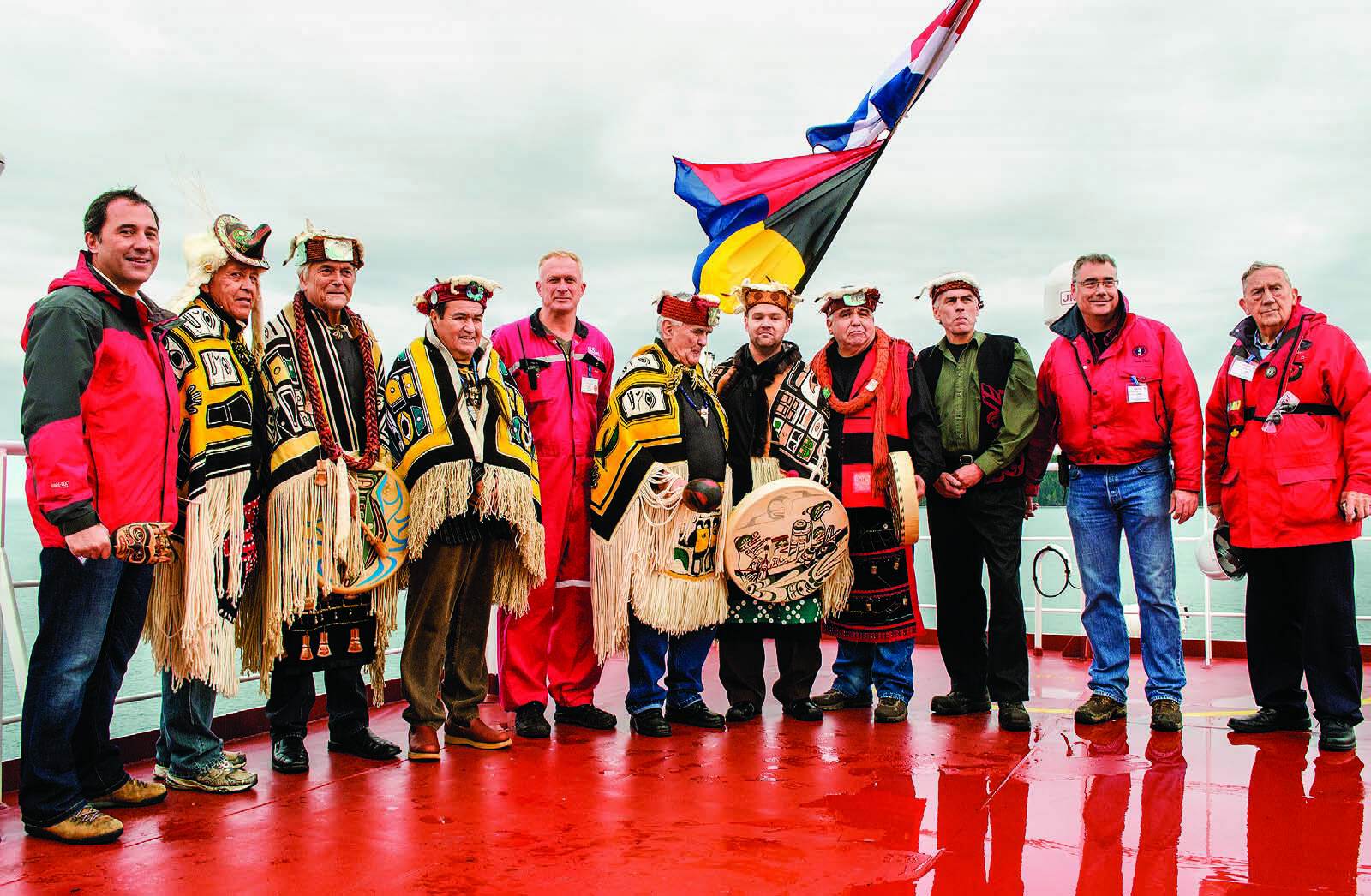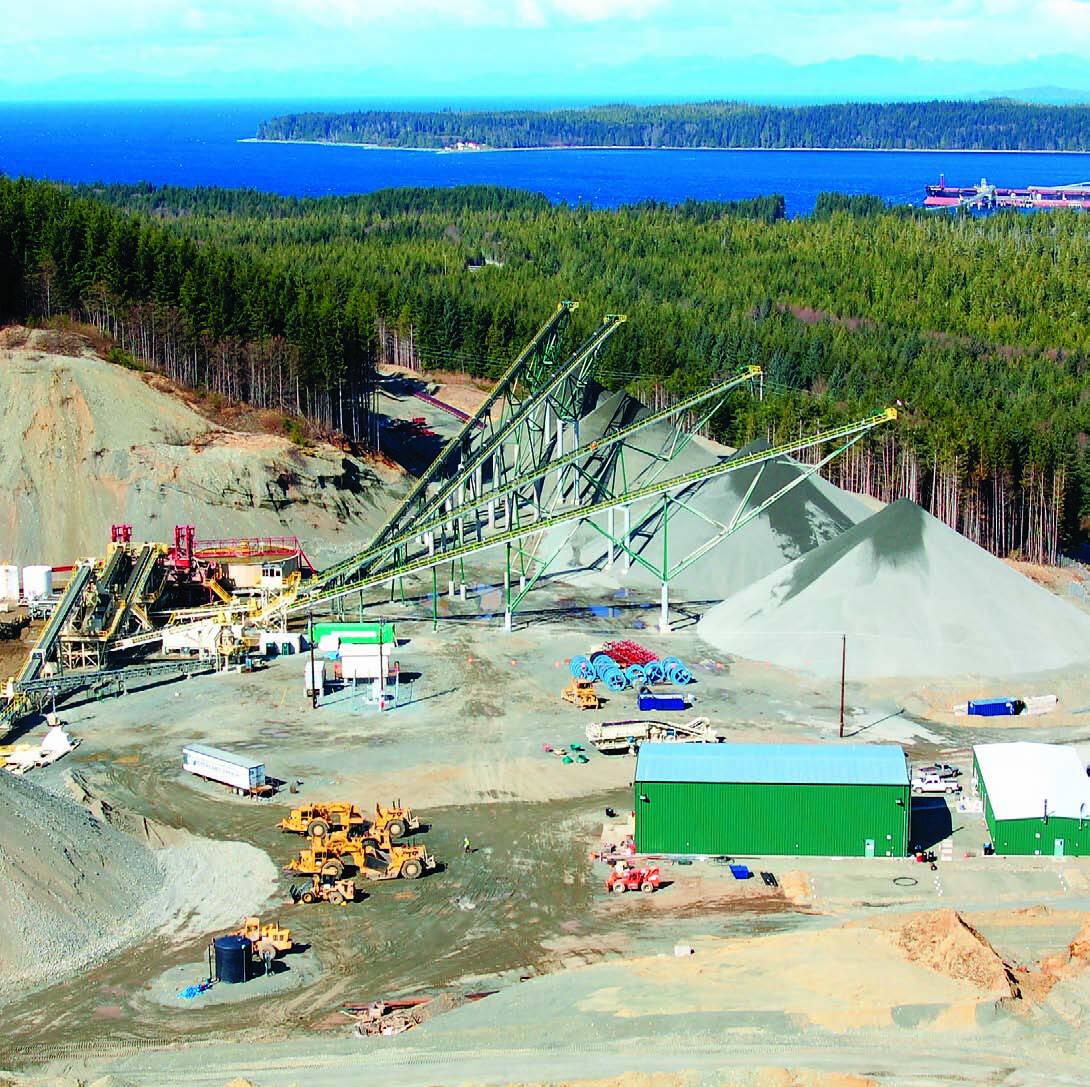
Recent legal decisions – some by the Supreme Court of Canada – have had profound effects on the interests of First Nations. In June 2014, for example, the Supreme Court granted the Tsilhqot’in Nation’s request for Aboriginal title over land in B.C., while stipulating that provincial laws and regulations still apply on the land in question.
AME BC responded that the outcome will enable further investment from the minerals sector and could create jobs and economic opportunities for all citizens of B.C., including the Tsilhqot’in Nation itself. Furthermore, the consistency regarding title and decision-making generated by the Supreme Court decision will attract investment in the province.
This article looks at the relationships between aggregate operators in B.C. and the First Nations with whom their operations bring them into contact. While some operators have minimal or no contact at all with First Nations, some companies find such associations extremely beneficial.
Polaris Minerals Corporation
Supplying high-quality construction aggregates to major coastal city markets in California and Hawaii as well as British Columbia since 2007, Polaris Minerals Corporation operates the Orca Quarry on the northeast coast of Vancouver Island, west of Port McNeill. Orca is 88 per cent owned by Polaris and 12 per cent by the ‘Namgis First Nation.
Sand and gravel production from Orca is currently permitted for 6.6 million tons per year via a dedicated ship-loading facility onto 80,000-ton Panamax vessels. Current destinations include the San Francisco–Oakland Bay Bridge. Polaris is currently developing additional terminals in anticipation of sales growing as the company’s geographical footprint increases.
Also on the Vancouver Island shoreline, 15 kilometres south of Port Alberni, is the Eagle Rock Quarry Project, a large permitted (six million tons per year) granite resource. Eagle Rock Quarry’s exploration and drilling program confirmed total measured and indicated mineral resources of 757 million tons with, at the permitted production rate, a potential life of over 100 years.
Indeed, Eagle Rock is intended to complement the sand-rich Orca Quarry mineral and to provide further significant growth. It is 70 per cent owned by Polaris and 30 per cent by local First Nations, of whom the Hupacasath and Ucluelet First Nations each own 10 per cent, with the remaining 10 per cent held in trust. Construction of Eagle Rock will commence when contracted demand has been secured.
Polaris president and CEO Herb Wilson outlined the links his company has been achieving with local First Nations. “Our two resource development areas are within overlapping treaty claims, the first having had a triple overlap (Hupacasath, Ucluelet and Tseshaht) and the second a double overlap (Kwakiutl and ‘Namgis),” says Wilson. “Our process has been considered groundbreaking in B.C. because we started by giving the First Nations a veto right over the areas to be drilled, and then entering into cooperation agreements that defined the areas to be explored.”

Once Polaris had proved a resource existed suitable to meet its business needs, it covered the cost for independent experts selected by the First Nations to advise them on the environmental and business ramifications of the project.
“We also offered the opportunity to be minor owners of the business. This was not a ‘free carry’ but had to be earned through investment with the company being prepared to loan and shortfall in funding. This way we all had the same interests in the business as owners.”
Wilson noted that Eagle Rock has not yet proceeded, citing “severe market recession,” but that Orca is operational. “We also have separate Impacts and Benefits Agreements (IBA s) with both bands,” he adds.
Mission Ridge Aggregates
A family-owned-and-operated company, Mission Ridge Aggregates extracts, manufactures and distributes sand, gravel, concrete, asphalt, quarry and limestone aggregates-based materials for the construction industry. Its geographical scope ranges from Whistler to Hope in B.C.
Mission Ridge and the Leq’á:mel First Nation have formed a joint venture – built on a foundation of trust with the Leq’a:mel First Nation over the last three years on the principles of hard work, honesty, sustainability, family and a sense of community, according to the company. Currently, in its DeBench Pit operation, 70 per cent of staff are from the Leq’á:mel First Nation, and Mission Ridge is providing the training internally.
Mission Ridge president and CEO Ted Craiggs, asked whether he wishes to change anything within the legal duty to consult, replied, “We have a very trusting, proactive, supportive relationship with the Leq’á:mel First Nation. Our consultation is limited to our joint venture working agreement, which is geared towards the development of long-term employment solutions and sustainable growth for their community as a whole.”
The duty to consult
Wilson’s view is that the duty to consult is complex and ever- changing. “Essentially, the duty to consult was really that of the provincial government, but we realized that they did not have the manpower to be effective, so the company led an exceptional consultation exercise with government officers in attendance.”
Engagement with the First Nations takes place quarterly with each band for Polaris, and, for Mission Ridge, consists of a continual engagement “with the band members and band board of executives to ensure we are on the same page and both parties are fulfilling their respective obligations,” says Craiggs.
Funding for the joint ventures is onesided. Wilson confirms that Polaris has not taken any payment from the First Nations. On behalf of Mission Ridge, Craiggs says that, “at this point, the Leq’á:mel have not jointly funded any joint venture programs and are actively seeking provincial and federal assistance in their commitment in the development of their band members through training and education.” The Leq’á:mel have provided the use of their land in Deroche, B.C., as a landfill operation and, in turn, Mission Ridge will build a sports field for the band.
Employing First Nations
Polaris and Mission Ridge have both demonstrated commitment to employing First Nations. Fifty per cent of Polaris’s employees are Aboriginal, and Polaris provides all necessary training on site. “This is a moral obligation or a target, not a legal quota, but we have kept to it and very successfully,” says Wilson. “We have enabled several First Nations employees to pass the Shift Boss examination, and their members are employed at all levels including management/supervisory.” Craiggs is more specific about the situation at Mission Ridge: “Positions we have made available through our self-funded, in-house training program are: scale operators, security, general labourers, equipment operators, crushermen, traffic control, water monitoring and landfill supervision. We are committed to the hiring of First Nations personnel who show a desire and commitment to their future training and employment development.”

Capitalizing on local knowledge
On occasion, local knowledge can be invaluable. It helped Polaris ascertain wildlife movements and, as Wilson explains, “every aspect of the environmental baseline studies was carried out with a First Nation member from the bands present so there could be no concern about the diligence of the exercise. We also employ some First Nation contractors in the operation when possible on areas such as noxious weed control, bird-nesting studies, pre-clearing of land, etc. We give priority to First Nations contractors, but on a commercial basis they must fairly compete.”
And at Mission Ridge? Ted Craiggs affirms, “Yes, they have been instrumental in assisting us in securing projects for the supply of aggregate locally and provincially through our joint venture agreement and the hiring of trained band members.” Successes and disagreements Neither Polaris nor Mission Ridge has experienced any disagreement with their respective First Nations. But Wilson is quick to point out that, “although regarded as a mining operation, production of construction aggregates is benign compared to metal mining – we don’t generate tailings, use chemicals or have huge waste dumps, and the land is being progressively reclaimed. This makes us an easier sell to all stakeholders.” In terms of successes, continues Wilson, “Our most significant achievement was that the exceptional consultation secured the support of each band when we made our mining and environmental permit applications. This positive support enabled agencies like Fisheries and Oceans Canada to move quickly and positively.”
At Mission Ridge, the main success “is providing full-time, well paying positions within our pit operations and ongoing projects,” says Craiggs. “These opportunities have paid major dividends to both the Leq’á:mel and Mission Ridge Group in the development of trust.”
He adds in closing, “Mission Ridge Group is very proud of the relationship and accomplishments to date in the development of our joint venture agreement with the Leq’á:mel First Nation. Their continued proactive commitment in the development, training and education of their band members is unparalleled from what I have witnessed for a very long time.”
